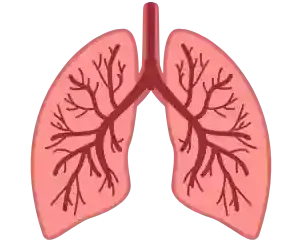Discover the Equestrian Lung Test, designed to ensure optimal respiratory health for horses. Accurate, reliable, and essential for equestrian care.
Disclaimer: Do not use this test if you have breathing problems such as asthma and the flu. Also, if you drink alcohol or smoke in everyday life, please consult a medical professional.
Equestrian Lung Test
Test your lungs with this online inspection tool
Hold your breath to measure your lung capacity

Leaderboard
| # | Time (s) |
|---|---|
| 1 | 0.0 |
| 2 | 0.0 |
| 3 | 0.0 |
| 4 | 0.0 |
1. What is the Equestrian Lung Test?
The Equestrian Lung Test is a diagnostic or evaluative tool designed to assess lung function in horses. It is typically used to understand respiratory health and detect potential issues that may affect a horse’s performance or well-being. This test is non-invasive and provides insights into a horse’s ability to breathe effectively during rest or activity.
2. Why is the Equestrian Lung Test important?
This test helps horse owners, trainers, and veterinarians understand the respiratory efficiency of a horse. Breathing issues can significantly impact a horse’s athletic performance and general health. By conducting this test, early signs of potential problems can be identified and addressed promptly.
3. Who can perform the Equestrian Lung Test?
The Equestrian Lung Test can be performed by trained equine health professionals or veterinarians specializing in horse care. While the test may involve straightforward procedures, it’s always best to consult with a qualified professional for accurate results and interpretations.
4. How does the Equestrian Lung Test work?
The test involves monitoring a horse’s breathing patterns, lung capacity, and airflow under controlled conditions. Depending on the specific methodology used, it may include observing the horse during physical activity or using specialized equipment to measure respiratory metrics.
5. When should the Equestrian Lung Test be used?
This test is typically used:
During routine check-ups to ensure optimal respiratory health.
Before competitive events to assess fitness levels.
When there are signs of respiratory distress, such as coughing or labored breathing.
To monitor recovery after respiratory illnesses or conditions.
6. Is the Equestrian Lung Test safe for my horse?
Yes, the Equestrian Lung Test is generally safe and non-invasive. It does not involve procedures that would cause discomfort or harm to the horse. However, ensuring the horse is calm and cooperative during the test is important for accurate results.
7. How long does the Equestrian Lung Test take?
The duration of the test can vary depending on the specific approach and equipment used. In most cases, it takes between 15 to 30 minutes. Additional time may be required for preparation or detailed assessments.
8. Can I use the results of the Equestrian Lung Test to improve my horse’s performance?
Absolutely! Understanding your horse’s respiratory health allows you to tailor its training, nutrition, and care routines. Addressing minor issues early can prevent larger problems and enhance overall performance.
9. What are common signs of respiratory issues in horses?
While this is not a diagnostic guide, some general signs include coughing, nasal discharge, labored breathing, or decreased stamina during exercise. If you observe these signs, consult an equine health professional.
10. Is the Equestrian Lung Test suitable for all horse breeds?
Yes, this test is versatile and can be applied to horses of all breeds and ages. It is particularly useful for performance horses, as their respiratory efficiency directly impacts their activity levels.
11. How often should the Equestrian Lung Test be performed?
The frequency of testing depends on the horse’s activity level, health condition, and environment. For performance horses, regular testing during training seasons is advisable. For others, annual or biannual assessments may suffice.
12. Can environmental factors affect the Equestrian Lung Test?
Yes, factors like dust, humidity, and air quality can influence a horse’s respiratory function and, consequently, the test results. It’s recommended to conduct the test in a controlled environment to ensure accuracy.
13. What can I do to maintain my horse’s respiratory health?
To promote respiratory health:
Ensure clean and dust-free bedding.
Provide good ventilation in stables.
Avoid exposure to allergens or irritants.
Offer regular exercise in open, fresh-air environments.
14. How does the Equestrian Lung Test differ from other health tests for horses?
Unlike general health check-ups, this test focuses specifically on respiratory function. It provides detailed insights into lung performance, making it a valuable tool for optimizing care and performance in horses.
15. Where can I learn more about the Equestrian Lung Test?
You can learn more by consulting equine health professionals, exploring equestrian care guides, or visiting reputable equine health websites and organizations.
